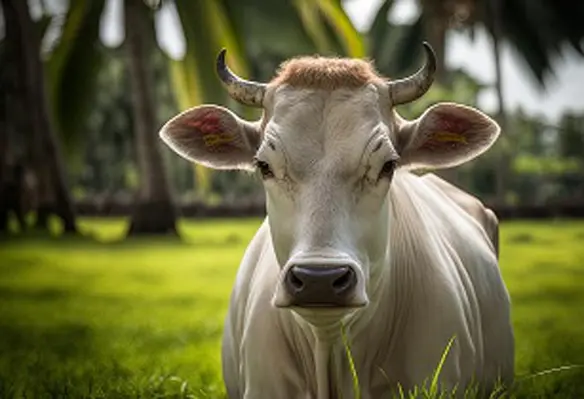The Food and Agriculture Organisation of the United Nations (FAO), through its Emergency Centre for Transboundary Animal Diseases (ECTAD), kicked off a two-week training course on animal quarantine management in Sing District, a border area between Lao People’s Democratic Republic and China
The training course aimed to accelerate safer cattle trade between the two countries and improve cattle export to China.
The activity is part of the FAO-China South-South Cooperation Project on transboundary animal diseases control in the Greater Mekong Subregion (GMS), funded by the Ministry of Agriculture and Rural Affairs of the People’s Republic of China (MARA), and in close collaboration with the Department of Livestock and Fisheries (DLF) of the Lao People’s Democratic Republic’s Ministry of Agriculture and Forestry (MAF).
Lao animal quarantine and health officers, farmers, livestock traders and village veterinary workers are expected to learn quarantine and health requirements for cattle to be exported to China. In the protocol, cattle are required to be quarantined in the fattening zone for 45 days and quarantine zone for 30 days located in Sing District, before exporting to China. This protocol was released to minimise the risk of disease transmissions of foot-and-mouth disease (FMD) and lumpy skin disease (LSD) – two common livestock diseases in the country – along the value chain.
Better control of transboundary animal disease will not only improve the livelihoods of agricultural communities but also boost economic growth by stimulating exports to the neighbouring country. According to data from GACC, more than 2.3 million tonnes of beef were imported to China from all over the world in 2022, with only less than 1% coming from the Lao People’s Democratic Republic.
DLF director general, Vilayphone Voraphim, applauded this trilateral initiative. “Our country earned an annual income of US$54mn from livestock exports to China. This activity comes at the right time as the government aims to boost cattle export with a targeted US$100mn profit in 2023. There is a great potential for Lao farmers to become bigger cattle exporters. We support Lao farmers in complying with requirements set by the Chinese authorities.”
Deputy director general, Xu Ming, MARA's Centre of International Cooperation Service (CICOS), noted, "China always attaches great importance to the agricultural exchange and cooperation with GMS countries. With that background, MARA contributed to GMS countries' transboundary animal diseases control program. Thanks to the joint efforts and full collaboration with FAO, technical support has been provided for the revision of the text on the China-Lao People's Democratic Republic beef cattle trade for its facilitation."
In the coming weeks, FAO, MARA and DLF will launch the FMD and LSD vaccination campaigns in five districts of Luang Namtha Province, covering all 40,000 cattle in the area. Meanwhile, cleaning and disinfection equipment will be provided for all 18 provinces across the country to help farmers protect their livestock against animal disease threats.





